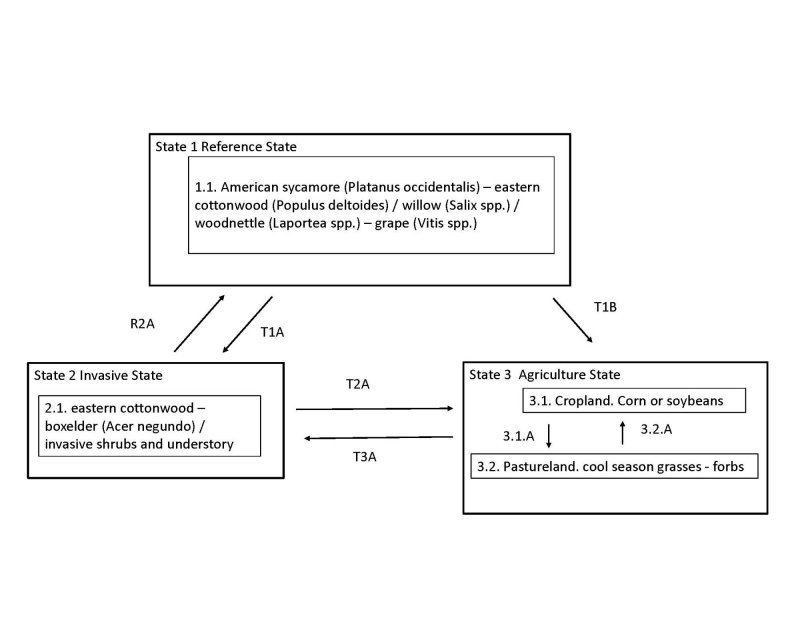
Natural Resources
Conservation Service
Ecological site F114XA203IN
Wet Alluvium Forest
Last updated: 9/26/2024
Accessed: 12/22/2025
General information
Provisional. A provisional ecological site description has undergone quality control and quality assurance review. It contains a working state and transition model and enough information to identify the ecological site.
MLRA notes
Major Land Resource Area (MLRA): 114X–Southern Illinois and Indiana Thin Loess and Till Plain
MLRA 114 makes up about 4,550 square miles (11,795 square kilometers. The three parts of this MRLA are mostly in the Till Plains Section of the Central Lowland Province of the Interior Plains. The western third of the western part is in the Highland Rim Section of the Interior Low Plateaus Province of the Interior Plains. The eastern half of the eastern part is in the Kanawha Section of the Appalachian Plateaus Province of the Appalachian Highlands. Both large and small tributaries of the Ohio River dissect the nearly level to very steep glaciated uplands in this area. The major streams and rivers have well defined valleys with broad flood plains and numerous stream terraces. The flood plains along the smaller streams are narrow. Broad summits are nearly level to gently sloping. Elevation ranges from 320 feet (100 meters) on the southernmost flood plain along the Ohio River to 1,250 feet (380 meters) on the highest ridges. Local relief is mainly 10 to 50 feet (3 to 15 meters), but it can be 50 to 100 feet (15 to 30 meters) along drainageways and streams. Also, the Ohio River bluffs are as much as 300 feet (90 meters) above the river valley floor.
Classification relationships
USFS: 222 Eastern Broadleaf Forest (Continental) Province.
Homoya's Natural Regions of Indiana: Bluegrass Region
NatureServe: Scientific Name: North-Central Interior Floodplain, Unique Identifier: CES202.694
Ecological site concept
The Wet Alluvium Forest reference community is a mixed hardwood floodplain forest. The dominant species in the canopy were American sycamore, eastern cottonwood, silver maple, boxelder, red maple, green ash, sweetgum, and swamp white oak. An earlier successional phase of this site is comprised largely of young cottonwoods, willows, and dogwoods along with various water-tolerant herbaceous species. The natural dynamics of the site are controlled by flooding, channel meandering, sedimentation and erosion. These processes still occur, but in recent times have been greatly altered from pre-settlement conditions by agriculture, bank stabilization, dams, diversions, and channel straightening.
Associated sites
| F114XA204IN |
Alluvium Forest Alluvium Forest. These sites are better drained than the Wet Alluvium Forest group. |
|---|
Table 1. Dominant plant species
| Tree |
(1) Platanus occidentalis |
|---|---|
| Shrub |
(1) Salix |
| Herbaceous |
(1) Laportea |
Click on box and path labels to scroll to the respective text.
| T1A | - | Substantial disturbance; invasion of non-native vegetation |
|---|---|---|
| T1B | - | Clearing; agricultural management |
| R2A | - | Planting of desired species; brush control; weed control; timber stand improvement inputs. |
| T2B | - | Clearing; tillage; seeding; continued agricultural management |
| T3A | - | Abandonment; no management inputs |
State 1 submodel, plant communities
State 2 submodel, plant communities
State 3 submodel, plant communities
| 3.1 | - | Seeding; weed control; grassland management |
|---|---|---|
| 3.2 | - | Tillage; seeding; weed control; row crop management |
